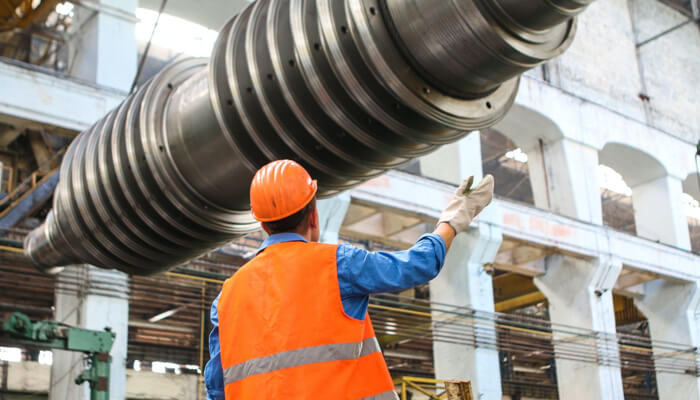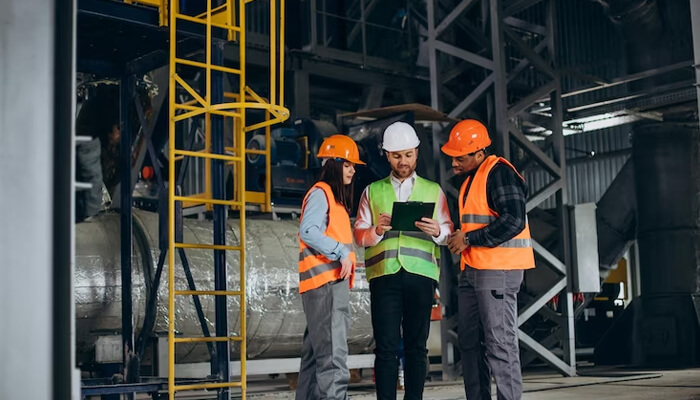Industrial Management aims to avoid breakdowns in a manufacturing facility. The dependability and availability of a company’s equipment affects production and capacity. A good maintenance plan gives equal weightage to several maintenance areas.
Best practices for industrial management area include:
1. Equipment and material maintenance
2. Building maintenance (painting, repairs, amenities)
3. Environmental maintenance
4. Electrical maintenance (lights, water, steam, energy generation)
5. Fire watch and floor cleaning
What Is a Best Practice?
What is meant by the term “best practice” is a method or set of rules that are effective in the past. We discuss best practices when discussing how to do a job or set up a device.
Regulators or companies can set best practices. Best practices are a part of a manufacturer’s instructions, general guidelines, or handed down informally.
There may be a legal necessity for specific sectors to adhere to standards of excellence. In many technical fields, best practices are the best way to operate, use a product, or achieve goals. Businesses should follow best practices wherever possible, even if not mandated by law.
Why Should We Consider Best Practices?
Effective methods improve quality, reduce supply chain costs, promote productivity, and increase profitability. Adopting best practices for planning and scheduling may enhance a company’s supply chain, safety, quality, HR, finances, and law. Best practices help comply with rules such as:
1. CGMP (Current Good Manufacturing Practice)
2. MMOG/LE (Materials Management Operations Guidelines/Logistical Evaluation)
3. OSHA (Occupational Safety and Health Administration)
4. SOX (Sarbanes-Oxley Act), including those about certain functions and regions
How Can an Industry Determine What Practices It Should Follow?
An industry’s own standards of excellence may improve production, efficiency, and morale.
1. Find out where it might help to implement best practices. Find the groups or departments where there is disagreement on how to get something done or where there is a history of uneven results.
2. Look around to see what works regarding preventive maintenance. Look for existing internal and external written guidelines on how to do the work at hand.
3. Get input from employees on the best ways to record institutional knowledge. Determine why certain companies are more successful than others, then apply their techniques.
4. Newly developed techniques should be shared. Create simple, straightforward, and easily accessible new guidelines.
5. Test how effective the new methods are and take advice from a maintenance consultant. In some instances, the intended result of establishing new norms may still need to be achieved. Plan a follow-up checkup and adjust accordingly.
Best Practices in Industrial Maintenance
Standardizing measurements and methods streamline industrial maintenance. It guarantees every work is done securely, efficiently, and productively. Best practices can be implemented effectively with the help of industrial maintenance consultants. They have the requisite skills and knowledge regarding maintaining the industrial aspects, be it maintenance, preventive, or facility maintenance. Be sure to gather all the advice you can from experts before going all in to get the best possible bottom line for your company.
As said, defining and implementing maintenance standards may be time-consuming and complex. Where to begin and how to launch the implementation of SOP(Standard Operating Procedure) are outlined below.
1. Meeting the Team
Mechanics, electricians, and other maintenance employees are usually segregated. Electromechanics, robotics, hydraulics-pneumatics, etc., are needed for smooth everyday operations.
Since various jobs share hardware, specialists with diverse skill sets are in demand.
“Local” expertise in mechanical, electrical, hydraulics, and computers is much favored. These experts hold proficiency in all aspects of industrial management. When it comes to ensuring seamless operation and maintenance of complex industrial systems, the input of a professional industrial electrician can be particularly invaluable, offering specialized knowledge to enhance efficiency and reliability.
Maintenance consulting experts may operate alone or with manufacturers over many segments and lines. Researchers and organizers who plan, subcontract and supervise activities are valuable.
2. Employees Need Cross-Training
Training choices include on-the-job maintenance training, classroom education, and distance learning. The benefits of cross-training are twofold: it boosts production and motivates workers. It helps personnel understand their duties in plant maintenance and reduces accidents.
3. Gather and Analyze Data for Plant Issues
Cost-effective maintenance requires downtime, asset behavior, intervention history, and spare parts data. Expert cost savings consulting can aid in this aspect.
The selection of hardware relies heavily on analyses. For example, learning about cutting-edge machinery may help advance more traditional technologies. Create manuals, toolkits, instructions, operating modes, and diagrams using the data.
4. Lean Manufacturing
Lean manufacturing strives to decrease manufacturing inefficiencies. Lean defines wasted effort as everything that doesn’t help the customer. Companies may create their own lean journeys to reduce errors, overproduction, and waste.
5. Permit Automation
Robotics and process automation boost factory productivity, reduce errors and save costs.
6. Time Your Maintenance in Advance
1. Construct a Maintenance Schedule
An industrial maintenance plan helps managers divide daily work and schedule machine shutdowns without affecting the business. They also stock up on tools, equipment, and replacement components. A preventive maintenance plan’s end purpose is to guarantee the following:
1. Acceptable performance can be expected from a piece of machinery (performance and quality)
2. The optimal working environment is provided.
3. The safety of other properties is ensured
4. Routine upkeep is created with regular duties and times
5. Routine Standard Maintenance Procedures (SMPs)
SMP standardizes basic jobs and complicated duties resulting from unforeseen failures. But UMS (Universal Management Standard) estimates, measure, and manage the time necessary for maintenance operations. Specifying all actions in an SMP ensures high-quality work no matter who does it.
2. Measure Maintenance
Mean Time Between Failure (MTBF) and Mean Time to Repair (MTTR) are only two examples of maintenance intervention metrics. However, there are many more (mean-time-between-failures). Compare the time and money wasted due to maintenance versus the cost of an hour of downtime.
3. Rely on a Computerized Maintenance Management System
In the wake of defining and analyzing all relevant factors, new prospects will become more tangible. To improve your maintenance procedures now is the time to use a CMMS.
7. Implement a Plan for Dealing With Possible Risks
A maintenance consultant’s risk management strategy helps locate, rank, and reduce dangers. Your organization can enhance productivity and responsibility with the correct risk management. Your team may modify procedures using risk management.
8. Perform Preventative Upkeep
Adopt a preventative stance with a thorough asset maintenance plan. Reduce expensive downtime by planning routine maintenance for all of your machines in advance. Tools like oscilloscopes assist in the maintenance of industrial machines by detecting electrical anomalies, diagnosing faults, and ensuring optimal performance to prevent costly breakdowns.
9. Global Trade and Environmental Monitoring
The relevance of environmental protection and international trade restrictions has risen. Manufacturers face fines and legal difficulties for noncompliance with global and local rules.
ERP and automation software improve tracking and tracing in production. They reduce manual work and increase supply chain visibility. Guaranteeing adherence to international trade and environmental regulations is another thing software does.
10. Start Using a Quality Management System
The ability to adjust to the times is crucial for manufacturers. A quality management system promotes production consistency, reduces mistakes, and boosts customer satisfaction.
11. Maintain a Restart Checklist
Protests, strikes, government restrictions, extreme weather, and pandemics disrupt manufacturers’ operations. A restart checklist might help minimize risks if operations must be resumed due to chance.
Conclusion
Industrial maintenance standards include best practices, measurements, strategic choices, and quality features. Mobility Work, a cloud-based CMMS, and maintenance management tool, may aid your factory. Make sure you read our insightful piece before utilizing the best practices.




